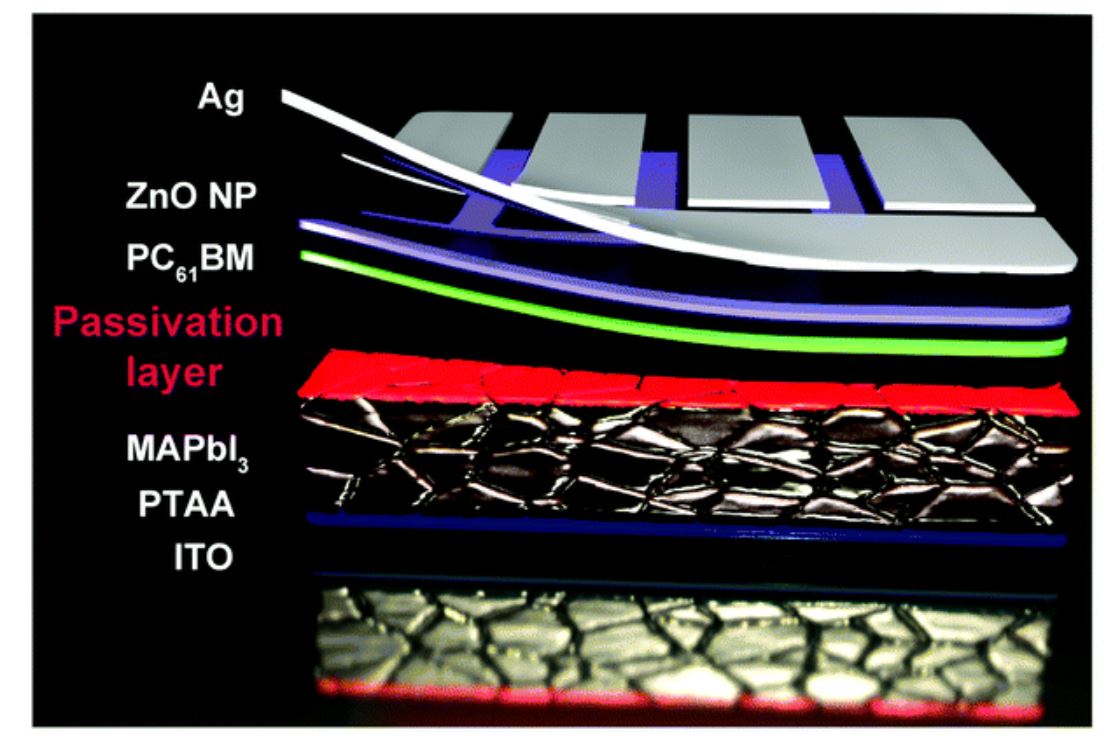Researchers at South Korea’s Ulsan National Institute of Science and Technology (UNIST) have developed an inverted perovskite solar cell with a vertically oriented passivation layer. It relies on two-dimensional Ruddlesden–Popper perovskites (RPP), which are known for their excellent stability.
The scientists said they were able to achieve a “highly ordered” passivation layer by gauging the deposition rate of the RP phase perovskite, which has a direct influence on its crystallographic orientation.
“We demonstrate the use of a highly oriented butylammonium RP perovskite as a surface passivation layer with bottom-up growth on the bulk perovskite absorber layer via vacuum deposition,” they explained. “In this process, the crystal formation time directly affects the crystallographic orientation of the passivation layer.”
They built the cell with an indium tin oxide (ITO) substrate, a hole transport layer (HTL) made of poly-triarylamine (PTAA), methylammonium lead iodide (MAPbI3) perovskite layer, the RPP passivation layer, an electron acceptor made of phenyl-C61-butyric acid methyl ester (PCBM), a zinc-oxide (ZnO) layer, and a silver (Ag) metal contact.
Popular content
They said the 2D perovskite layer passivates the bulk perovskite defects and promotes charge transport efficiency. The champion cell designed with this configuration achieved a power conversion efficiency of 21.4%, which the academics described as the highest ever achieved for perovskite solar cells formed by vacuum deposition.
They described the cell in “A vertically oriented two-dimensional Ruddlesden–Popper phase perovskite passivation layer for efficient and stable inverted perovskite solar cells,” which was recently published in Energy & Environmental Science.
“Our findings provide a new perspective toward further improving the performance of perovskite solar cells by mitigating nonradiative recombination pathways in perovskites,” they said.
This content is protected by copyright and may not be reused. If you want to cooperate with us and would like to reuse some of our content, please contact: editors@pv-magazine.com.



1 comment
By submitting this form you agree to pv magazine using your data for the purposes of publishing your comment.
Your personal data will only be disclosed or otherwise transmitted to third parties for the purposes of spam filtering or if this is necessary for technical maintenance of the website. Any other transfer to third parties will not take place unless this is justified on the basis of applicable data protection regulations or if pv magazine is legally obliged to do so.
You may revoke this consent at any time with effect for the future, in which case your personal data will be deleted immediately. Otherwise, your data will be deleted if pv magazine has processed your request or the purpose of data storage is fulfilled.
Further information on data privacy can be found in our Data Protection Policy.